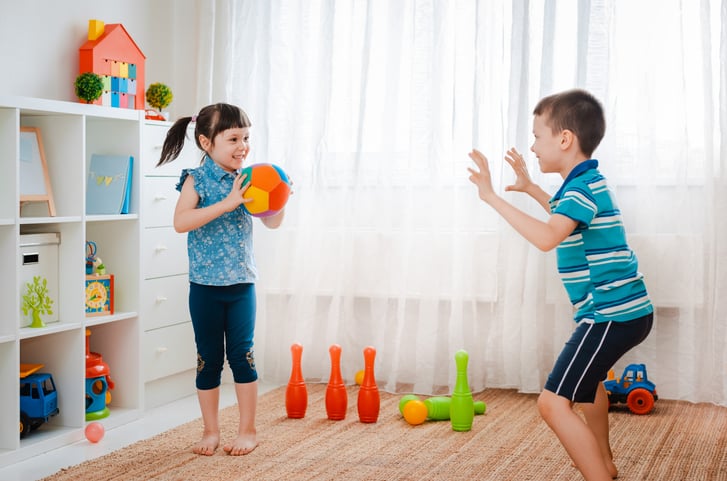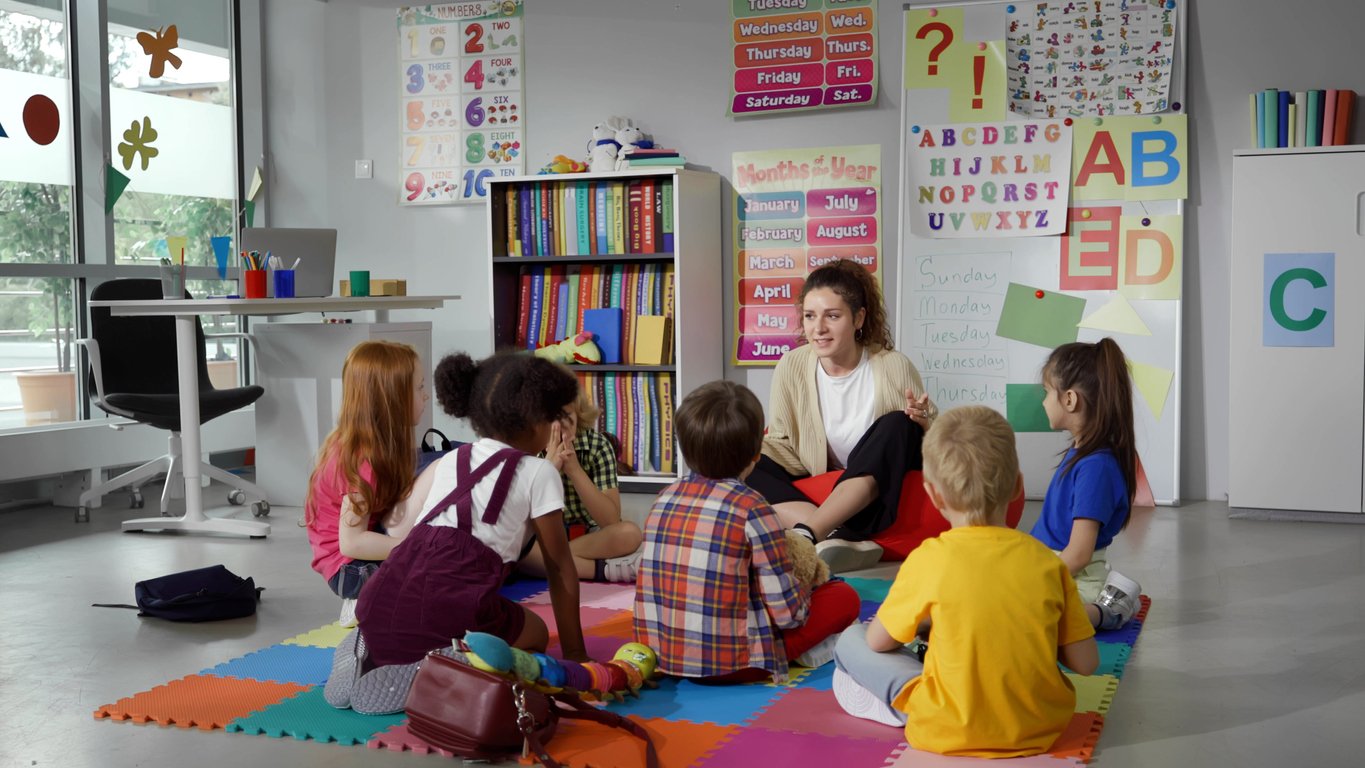Helping Autistic Students Connect with Other Students
Autistic students can sometimes have challenges related to social interactions, communication, and lack of social reciprocity. Due to these challenges, it is sometimes difficult for children with autism to easily meet and connect with others or transition to new groups.
As caregivers and educators, we can provide fun opportunities for children and adults to interact with one another and get to know individuals on a deeper level. By practicing these skill sets in a fun and meaningful way, we can lay the groundwork for helping form habits of interaction and engagement for autistic children.
Five Best Icebreakers to Use to Help Autistic Students Connect With Others:
1. The Name Game
Learning another person’s name is a great way to build a relationship and create a positive interaction from the start. This is a fun group activity, especially if meeting a new group of people for the first time.
Participants will sit across from each other in a circle and roll a ball to another peer. The first time the ball goes around the group, everyone will begin by introducing themselves. “Hello, my name is _____” and then roll the ball to a friend.
The leader should remind everyone to pay attention to each other’s names as the ball goes around. After everyone has had a turn, the ball will go back to the leader or the person who began. This time, the challenge is rolling the ball in the same order, and this time say hello to the person that you are rolling the ball to. “Hello, _____(to the peer you are rolling the ball to.)”
After everyone has finished, you will begin the third and last round of the game. In the same order, the leader will begin with rolling and saying hello to the peer receiving the ball. The next step of the game is that the peer will thank the person rolling the ball to them by name. “Hello, ____(to the peer you are rolling the ball to.)” “Thank you, ______ (to the peer that just rolled the ball.)” The participants will complete the same order as before, making sure that everyone has a turn. The leader can also prompt to help a participant if someone forgets a name.
Materials needed: A ball that can be rolled on the floor.

2. Eye Contact, Switch!
Individuals on the spectrum sometimes have difficulties with social reciprocity, such as making eye contact with others when in a conversation. This activity is a great way to practice this skill while moving and interacting with others. (While great for some students in helping them improve their abilities, some students may have high levels of discomfort with this activity, so it is not right for every student.)
To begin, have everyone stand around in a circle. Then direct everyone to look around the room or down at their shoes. On the leader’s direction, such as a clap or special word cue, everyone will try to make eye contact with a peer from across the circle. When they have found someone looking at them, they will walk across the inside of the circle and switch spots, standing where their partner previously started. This will continue until everyone has found a new spot within the circle. The game can then begin again. The leader can add interactive transitions, such as a high five or elbow tap when switching spots with their partners.
Materials needed: Open space.
3. Question Ball
Fill up a beach ball and use the various colors to write in questions to get to know one another. With a Sharpie marker, you can write questions like “What is your favorite hobby?” or “What is your favorite food.” When the beach ball is ready and full of questions, stand across from each other, or if in a larger group, stand in a circle. Pass the ball to a peer. When the individual catches the ball, ask them to answer the question that corresponds to where their right thumb landed. Repeat this until everyone has had at least one turn to answer questions. If you use a dry-erase marker instead of a Sharpie, you can reuse the ball and make new questions.
Materials needed: Sharpie or dry-erase marker and a beach ball.

4. This or That?
This is also a great movement activity to increase communication and empathy. To do this, you will need an open space that participants can walk around in. The leader will divide the space in half and ask a question. “Would you rather _____ or ______?” The participants must pick the side that they most agree with. The leader can then give opportunities for individuals to share why they chose their side, increasing communication and empowering them to share their ideas. Here are some great This or That sample questions.
Materials needed: Open space.
5. Find Your Match!
This is a wonderful way to interact more intimately with others, as well as increase communication skills. For this activity, you need an even number of participants to work with as partners. If you don’t have an even number then you can also partner with a student.
Each person is given a card and should be instructed to keep the content of the card a secret. Individuals will walk around and talk to each other using only one word to describe their card at a time. Once they have shared the word to describe their card with each member, they can then give a new word. The goal is to try to find the person who has the matching card, only through communication and not by showing the card. The pair that can find their match first wins the game. Stages Learning has many matching cards, that can also be used in a variety of ways.
Materials needed: Matching picture cards.

These activities can help promote social awareness and provide a framework for interacting with others around us. Icebreakers are a great way to encourage fun interactions among both autistic and neurotypical individuals while allowing them to get to know each other on a deeper level.









